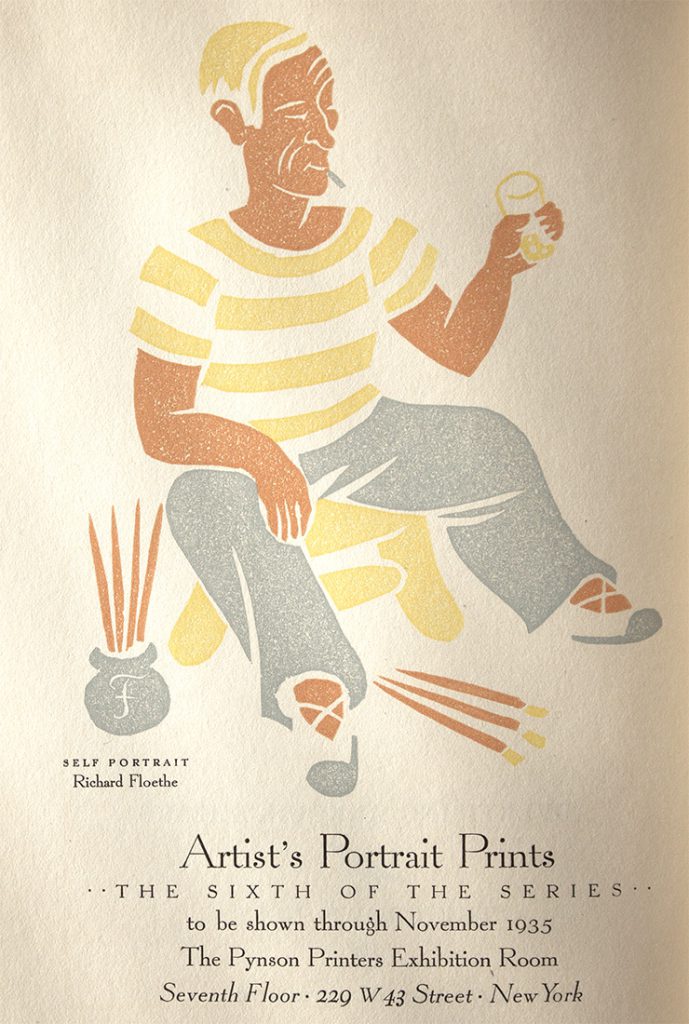
printed from the blocks in three colours.
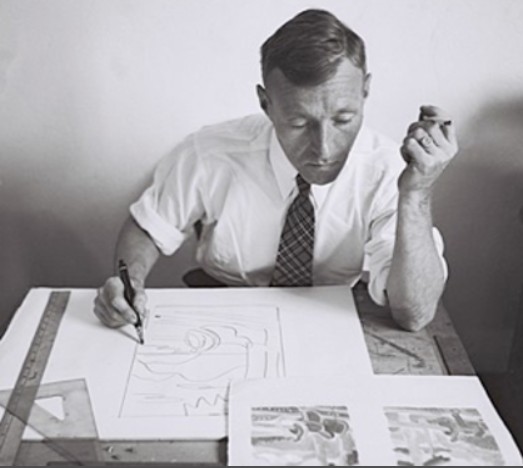
Richard Floethe’s wordless novel, Summer Holiday, is a charming summer romance – the story of an artist meeting a girl on a sailing holiday. Hand coloured; it is one of the few happy, wordless novels.
According to a son, “Floethe” is pronounced “flirta”.
NOTE: This artist, and his book, was not included in Wordless Books: The Original Graphic Novels as David Beronä was not aware of its existence at the time his book was published in 2008.
Richard Floethe (1901-1988) studied with Klee and Kandinsky at the Bauhaus, taught at the Ringling School of Art and Cooper Union, served as art director of Works Progress Administration (WPA), and was renowned as a graphic artist and book illustrator. During his lifetime he illustrated nearly 100 books, many written by his wife, Louise Lee Floethe.
Richard Floethe is the noted American artist whose imaginative illustrations for Tyl Ulenspiegle and Pinocchio have twice won him the Limited Editions Club International Contest, and whose charming illustrations for children have gained renown in the trade book field.
From the announcement put out by Brookdale Press.
Floethe used sailing themes a number of times over the years; an example of which is this notice in The Colophon New Series 1937 Vol 2, No 4.
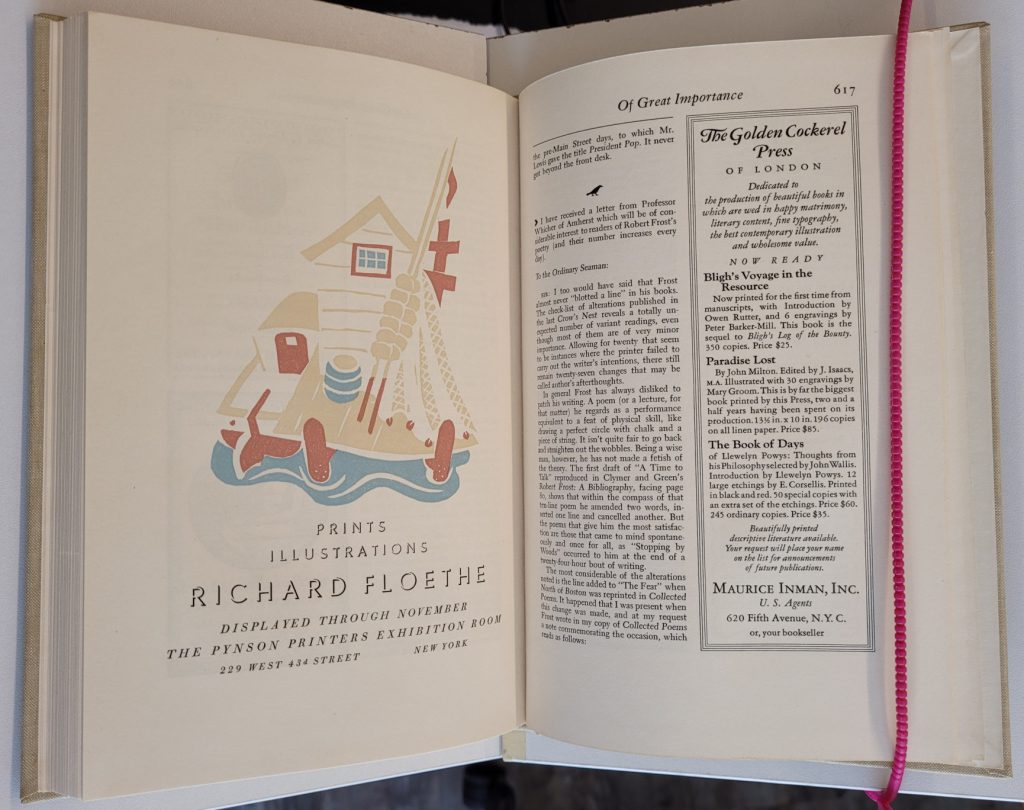
Summer Holiday Publication Announcement

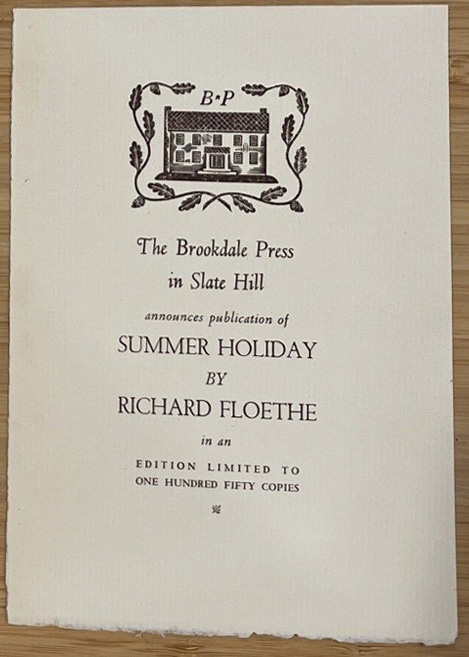
Summer Holiday 1939
Summer Holiday is the story of a gay vacation told in color and line. Sophisticated adventures of an artist sailing, sunning and romancing in picturesque Cape Cod. A humorous and beautiful book.
From the announcement put out by Brookdale Press.
- Title: Summer Holiday
- Author and Illustrator: Richard Floethe
- Year: 1939
- Publisher: The Brookdale Press
- Place of publication: Slate Hill
- Printer: The Brookdale Press?
- Copyright: The Brookdale Press
- Binding: hard cover
- Cover: paper covered boards with sailboat image on front cover,
- Language: English
- Edition: Colophon states limited to 150 copies; signed by the artist and numbered
- Description: slipcase, 21 cm, 31 ff.,
- 30 images with black line drawings by lithography then hand-coloured in shades of pink and blue.
- All three edges cut; brownish-black top stain
- Printed recto.

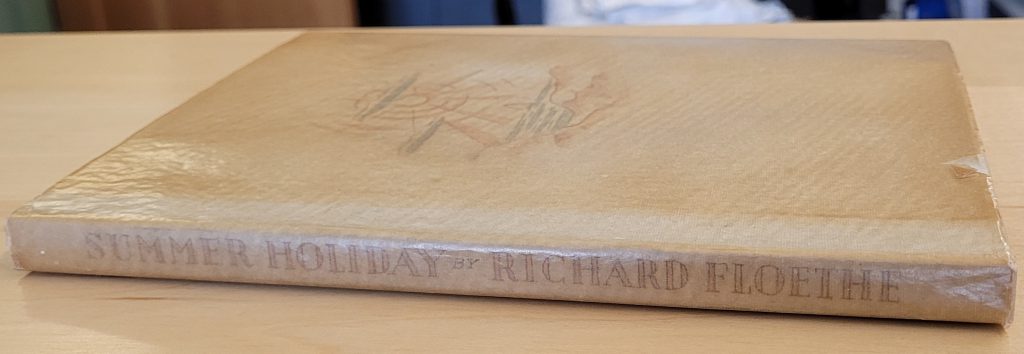
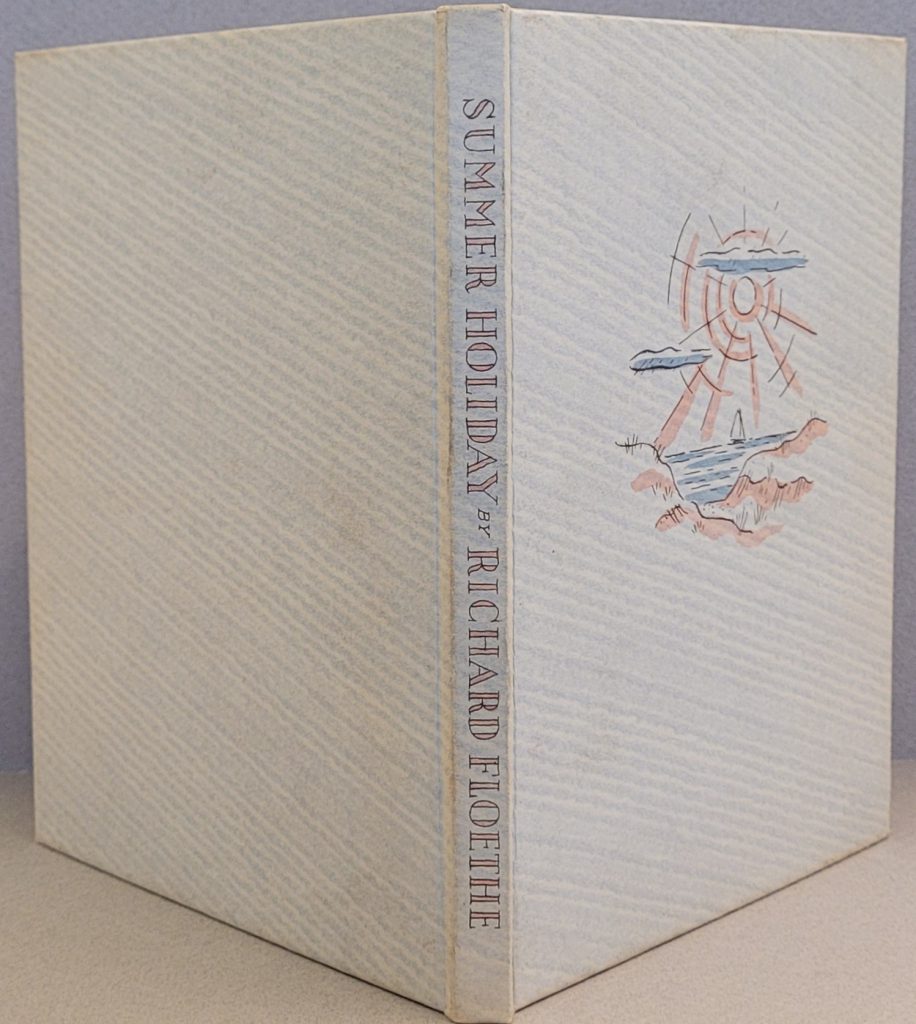

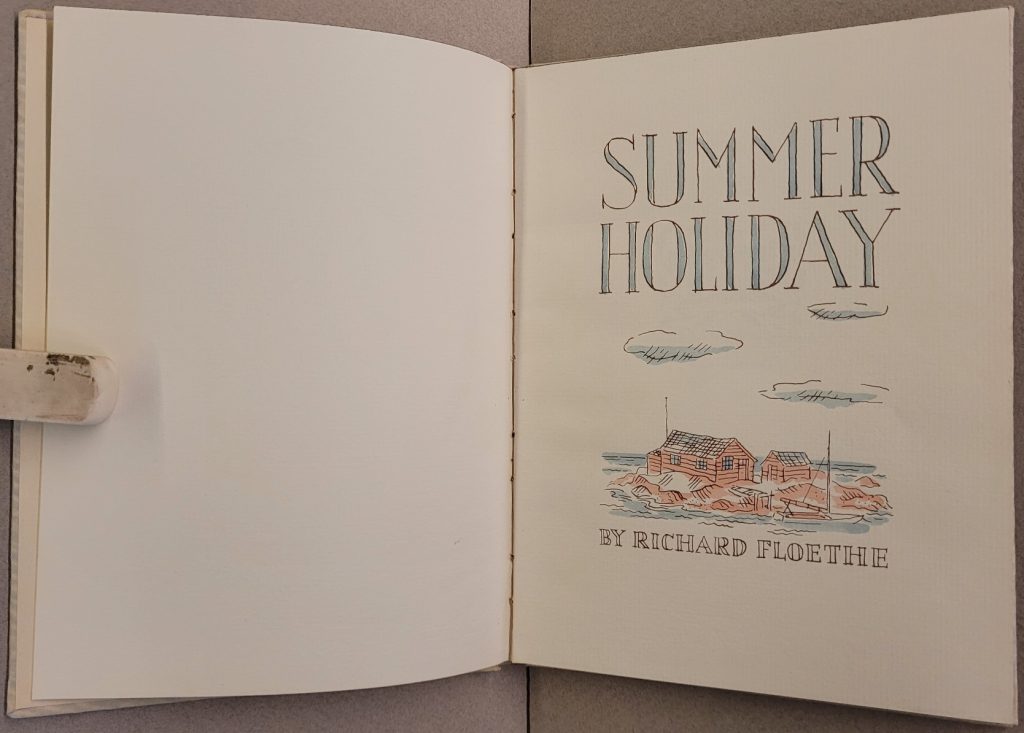
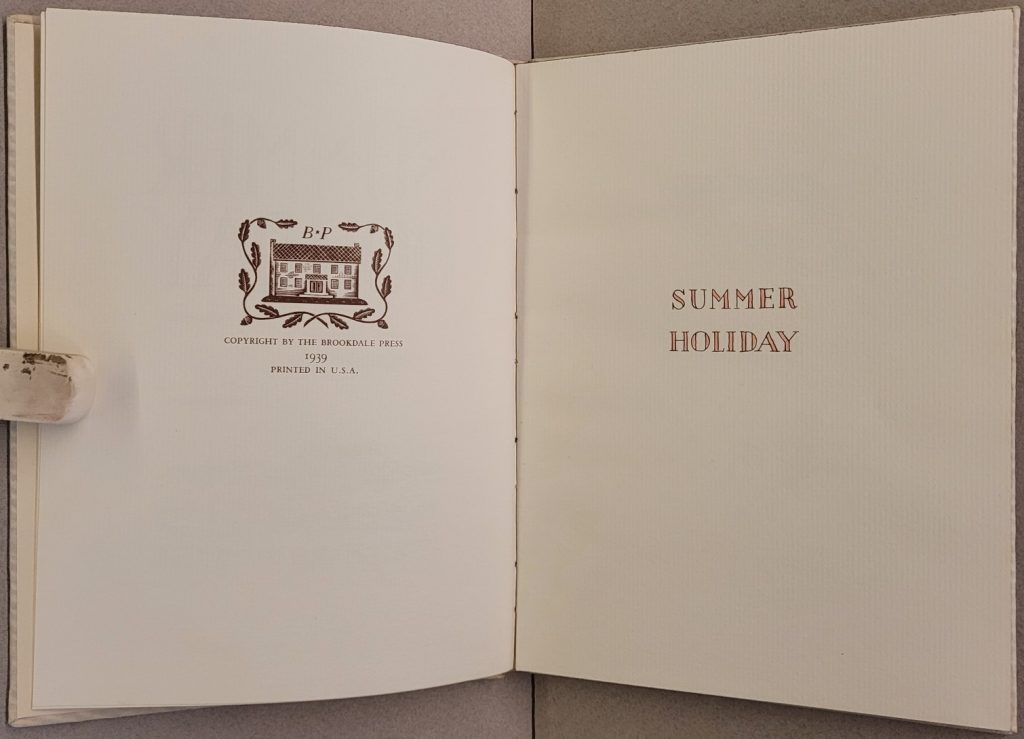
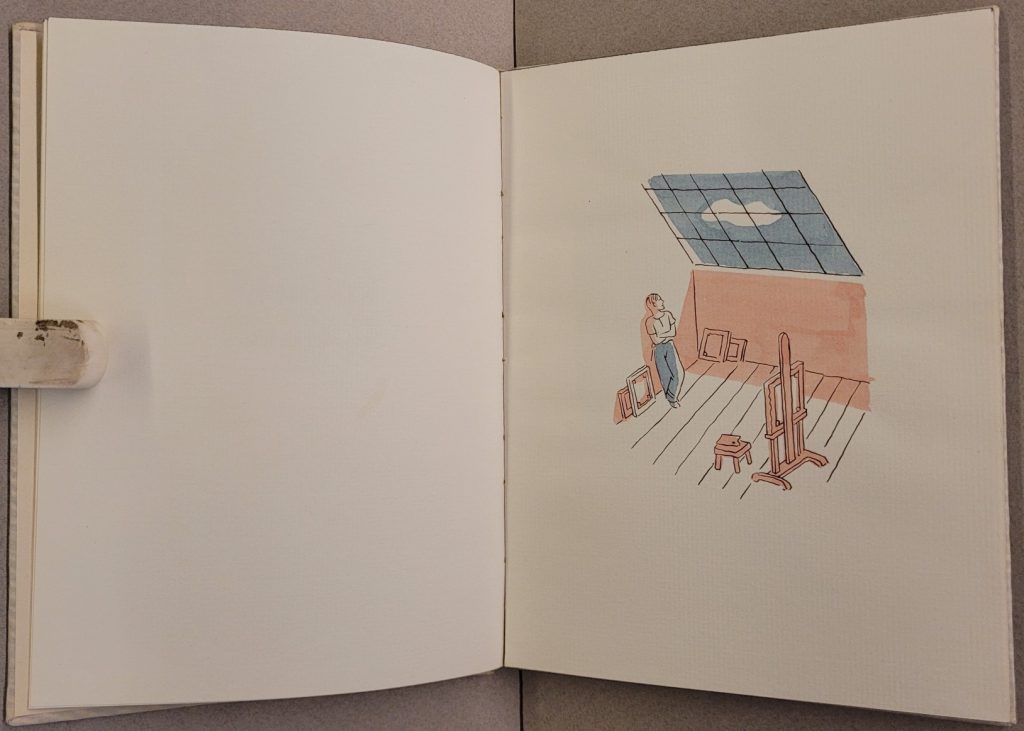
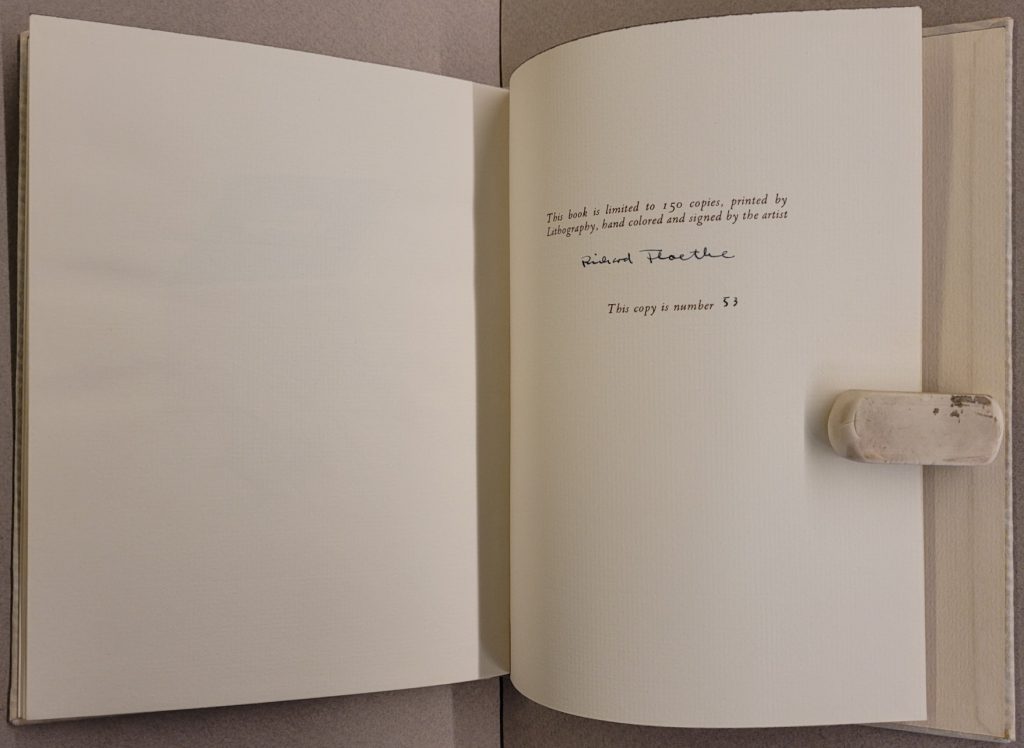
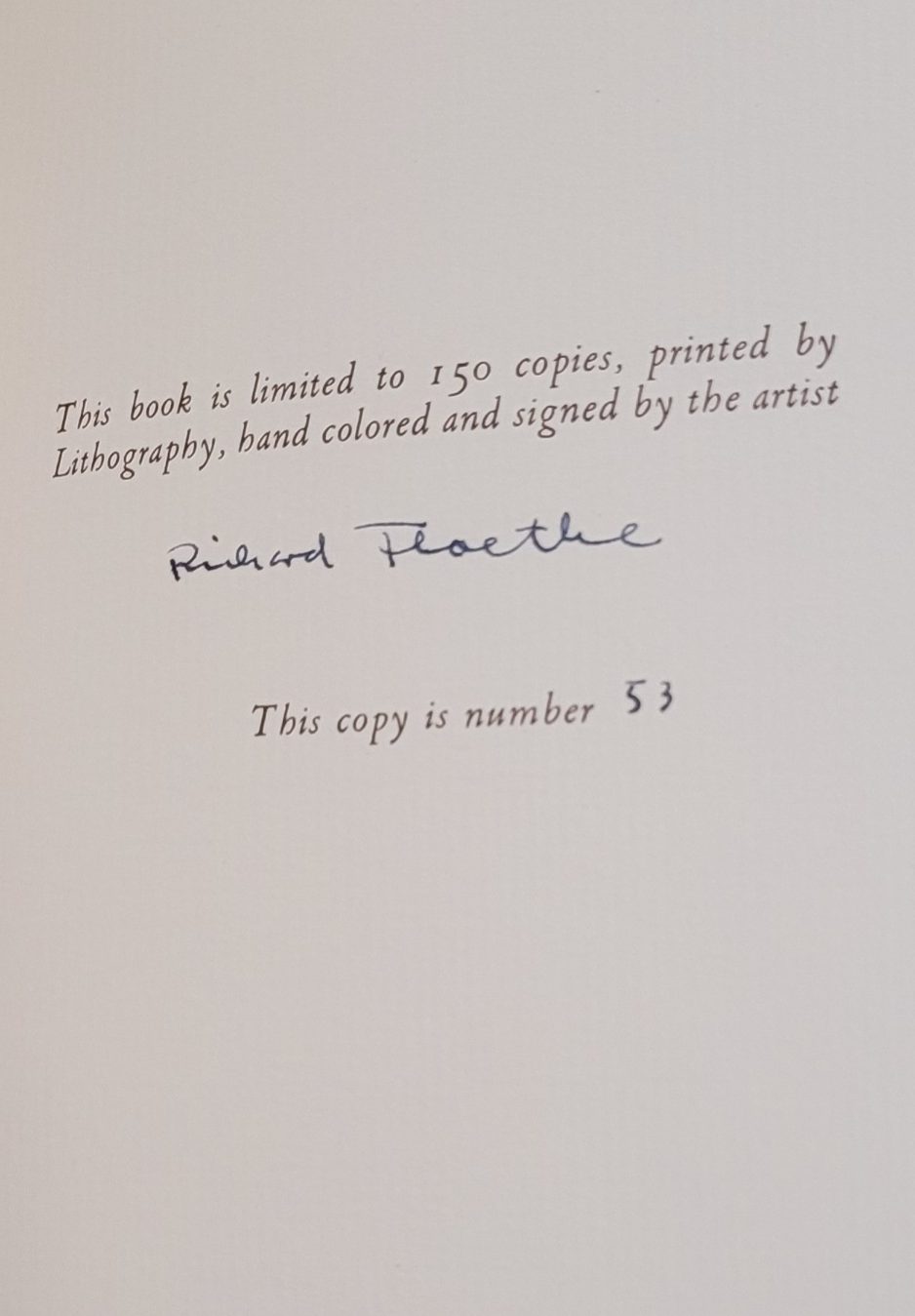
Sample page with variations
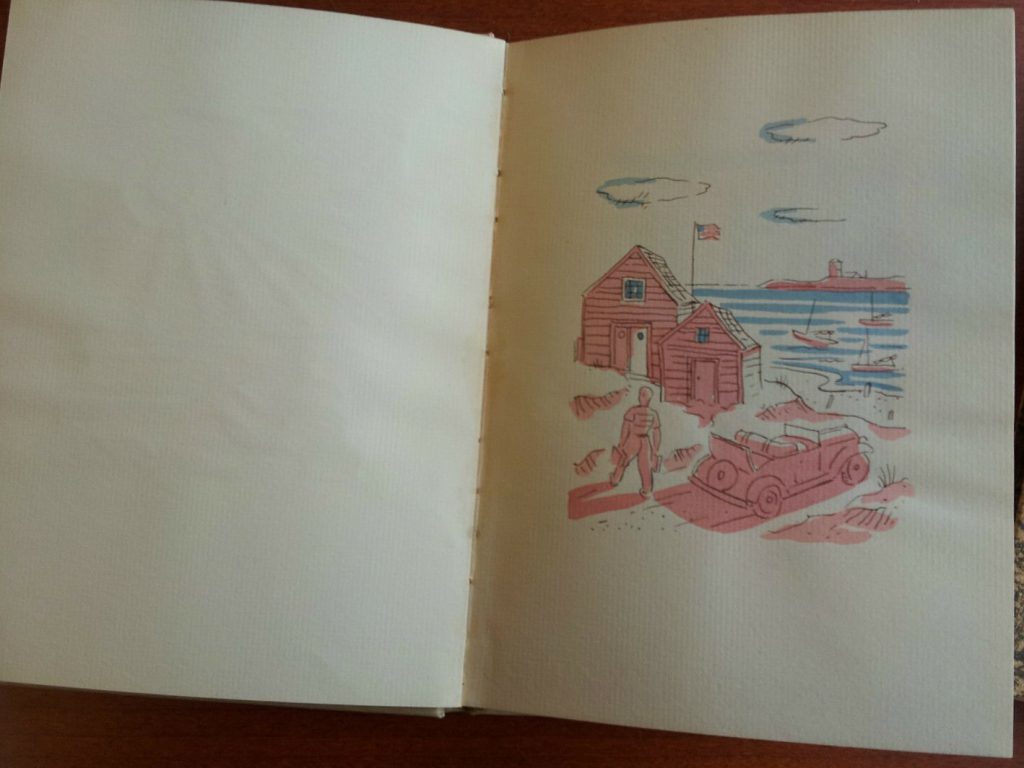
The black lines in the images were printed as a lithograph. The pink and the blue for the images was hand coloured by the artist (presumably with water colours). Typically when a book is published, extra copies are made to allow for mistakes or damage in the assembly. Assuming an extra 10 for the overrun, that is 160 copies, each with 30 images ie 4800 sheets, most of which have two colours.
In the examples below, the blue could have been done using a stencil BUT given the wide variation in the patches of blue it looks like it has been done free hand.
The pink in this example has white areas surrounded by pink so clearly a stencil would not have been used for everything. Even where a pink stencil could have been used, there is too much variation so the assumption is the pink was also done freehand.
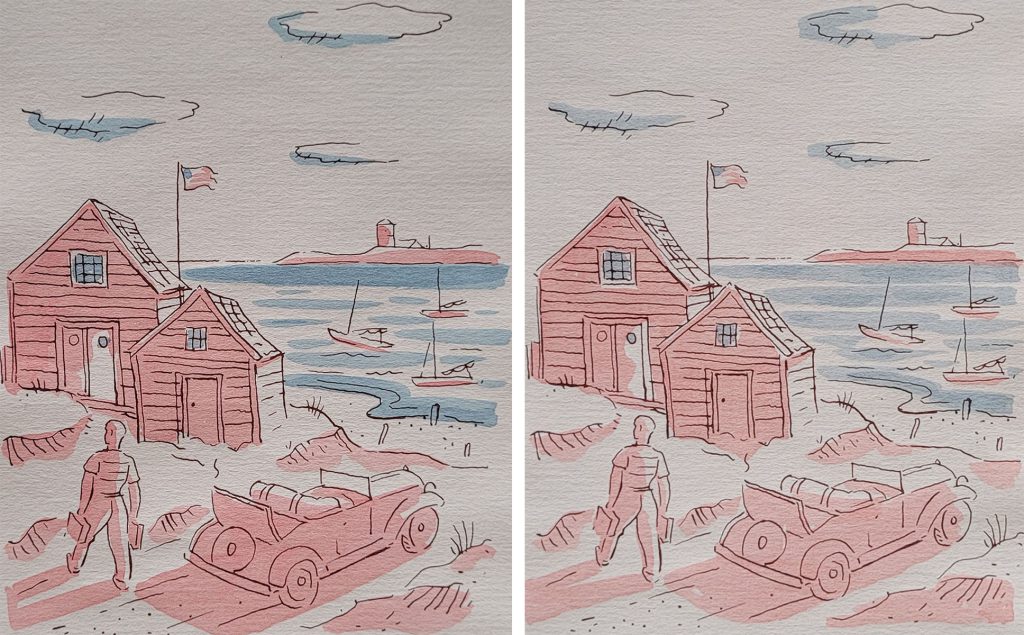
Floethe’s sons have put up a short video that sets the story to music. It can be seen HERE. NOTE – usually this link works but a few times it hasn’t ??????
Boards
The boards are covered with an off-white paper having mottled light blue diagonal lines. There is a blue and pink illustration on the front cover as well as lettering on the spine that has been filled in with pink. The book illustrations are black line lithos with hand colouring in blue and pink. MY SUPPOSITION – the cover image and even the spine titling are also hand coloured.
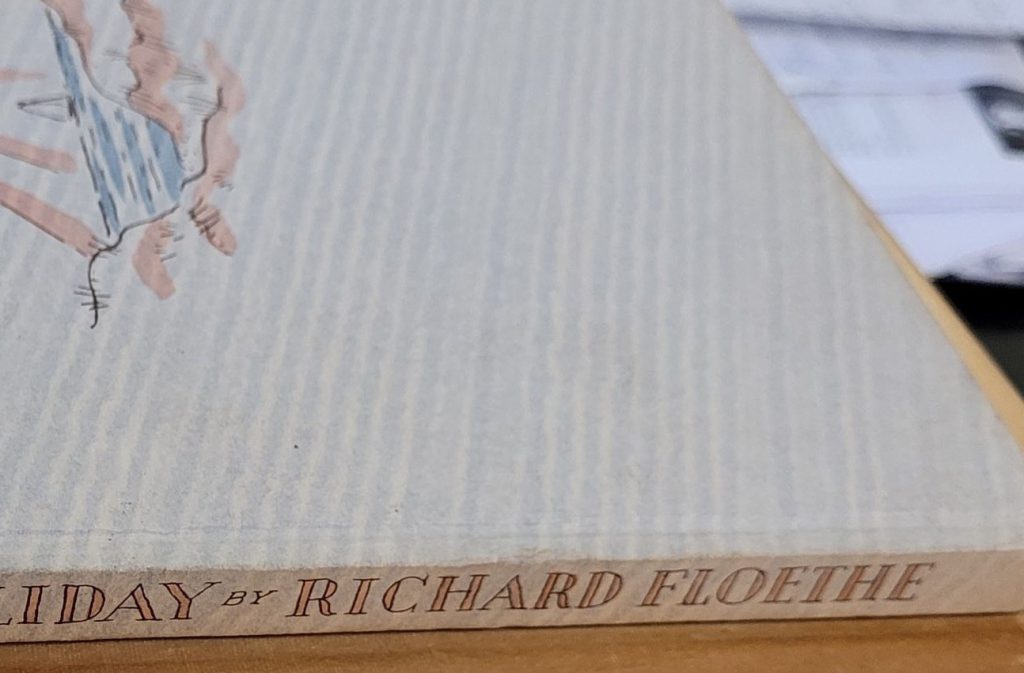
Does it seem credible that Floethe hand coloured the spine lettering in pink?
COMMENTS
If you disagree with something on this page, have an improvement, or have a comment please contact me
wn at wordlessnovels.com
Any information used will be given a credit line.